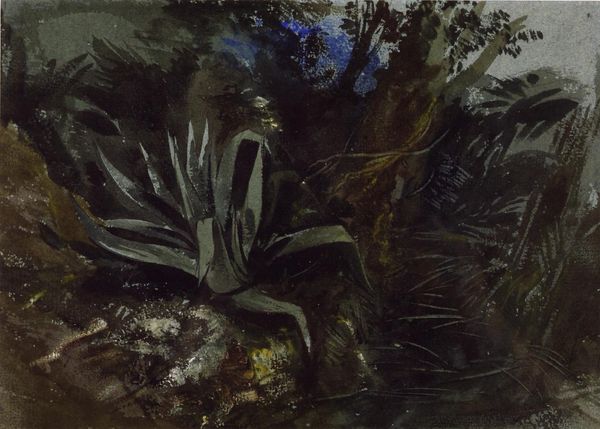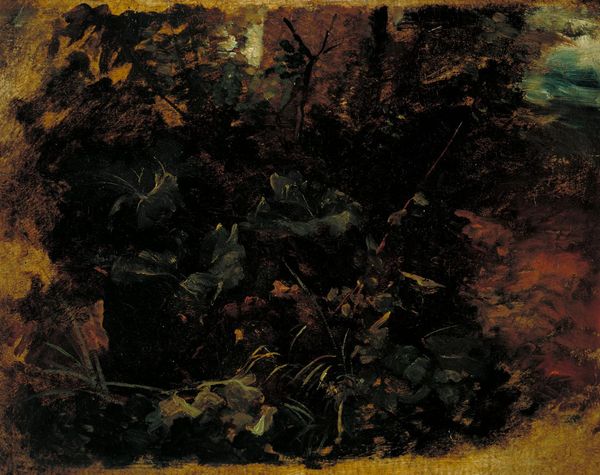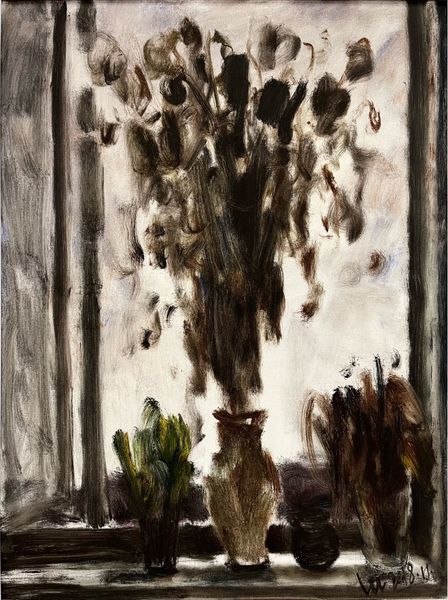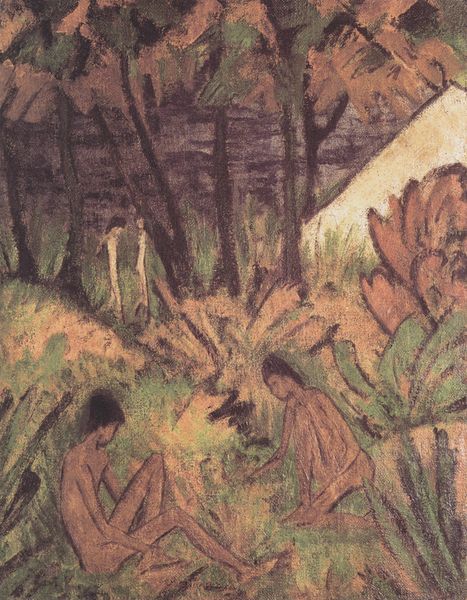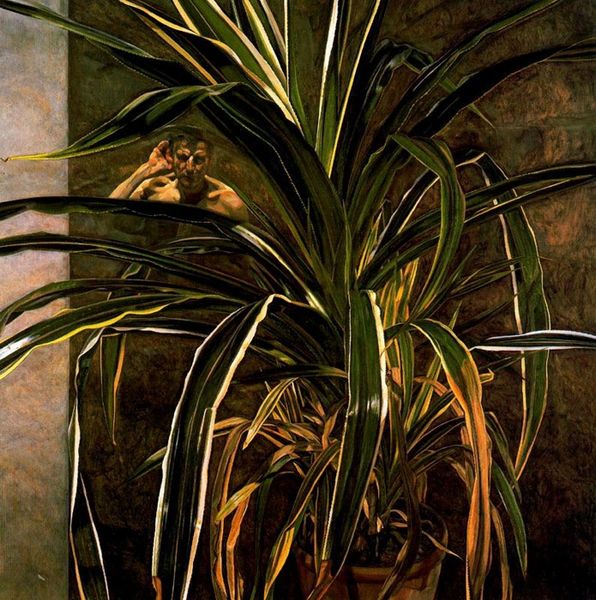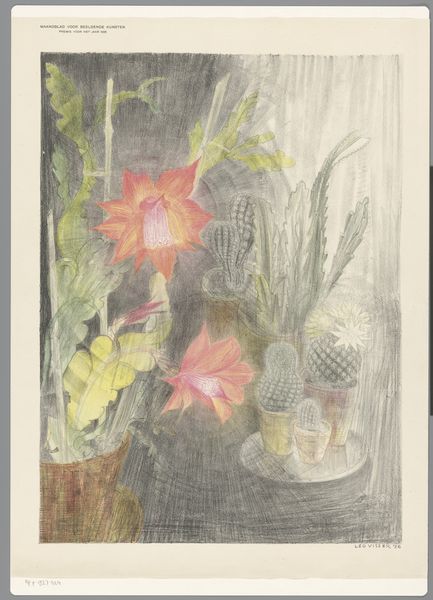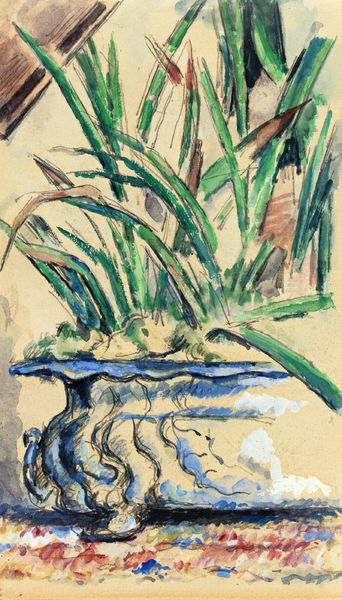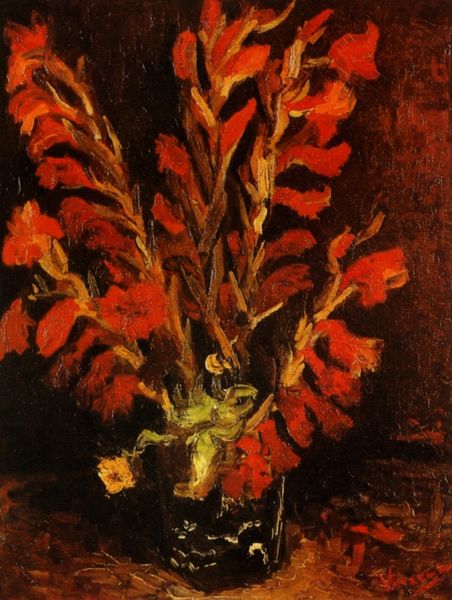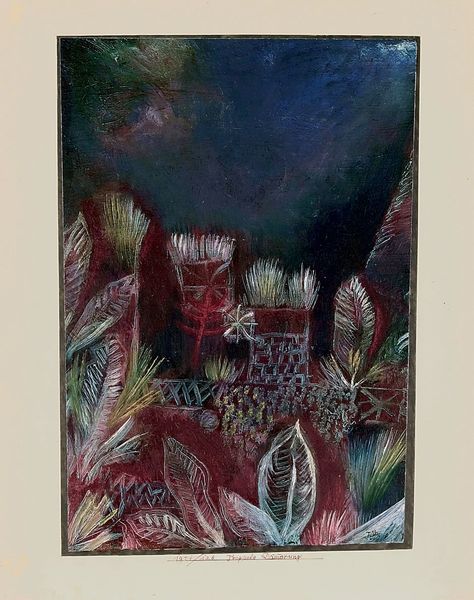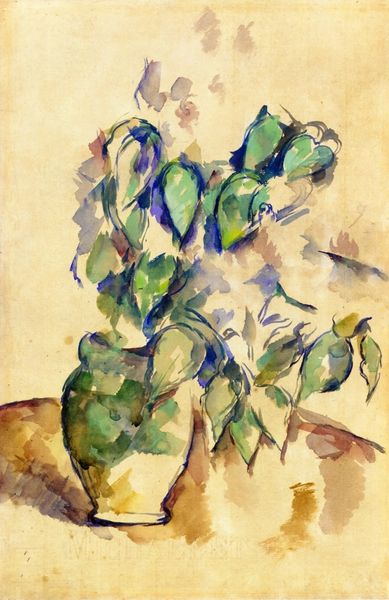
painting, oil-paint
#
painting
#
impressionism
#
impressionist painting style
#
oil-paint
#
landscape
#
impressionist landscape
#
watercolor
Copyright: Public domain
Curator: Alright, let's delve into this canvas. Before us we have "Begonie", painted around 1880 by Aleksander Gierymski. The work is an oil-paint piece. What are your initial thoughts? Editor: Honestly? It feels like sneaking into a greenhouse after dark. Those murky greens and browns—it's like the plants are whispering secrets. Curator: It's fascinating how Gierymski, rooted in the Realist tradition, flirts here with Impressionism. While trained in the traditional art academies of the 19th Century, you see how he experiments with the suggestive play of light, which was also visible in his urban works showing Jewish life in the streets. Editor: Suggestive is right! It's less about precise representation, more about capturing a mood. Look how the leaves seem to dissolve at the edges! It's dreamy, almost. It reminds me of a memory slowly fading. Curator: One could interpret this as part of the broader artistic movement of the era to embrace domestic and 'everyday' subjects. But this wasn't just art-for-art's sake. Botanical illustration, especially plants cultivated and collected in Europe, showed prestige and access to wealth during the expansion of empires and new territories. Gierymski might be playing on these underlying assumptions. Editor: Oh, I see that. Like, ‘check out my exotic begonias!’ Very subtle, but there it is. All that plant knowledge tied up with European colonialism, eh? Still, even without that context, there is a stillness to this image—an interiority. The heavy shadows makes you feel hidden within those plants. The color pallet invokes quietude, and the image's painterliness keeps me from getting bogged down in any botanical 'truth'. It allows for mood and affect to bubble to the surface. Curator: Indeed. The shadows definitely invite interpretation. Do you get a sense of anything specific in particular as you wrap up? Editor: In the end, it still feels intimate, a private moment captured. I am left feeling both at ease and contemplative at once. And you? Curator: Gierymski's choice of subject matter at a time when artists were engaging more and more with subjects outside academic circles is indeed still quite novel. And this piece is one that still inspires modern thought on the public roles that art plays in society.
Comments
No comments
Be the first to comment and join the conversation on the ultimate creative platform.
